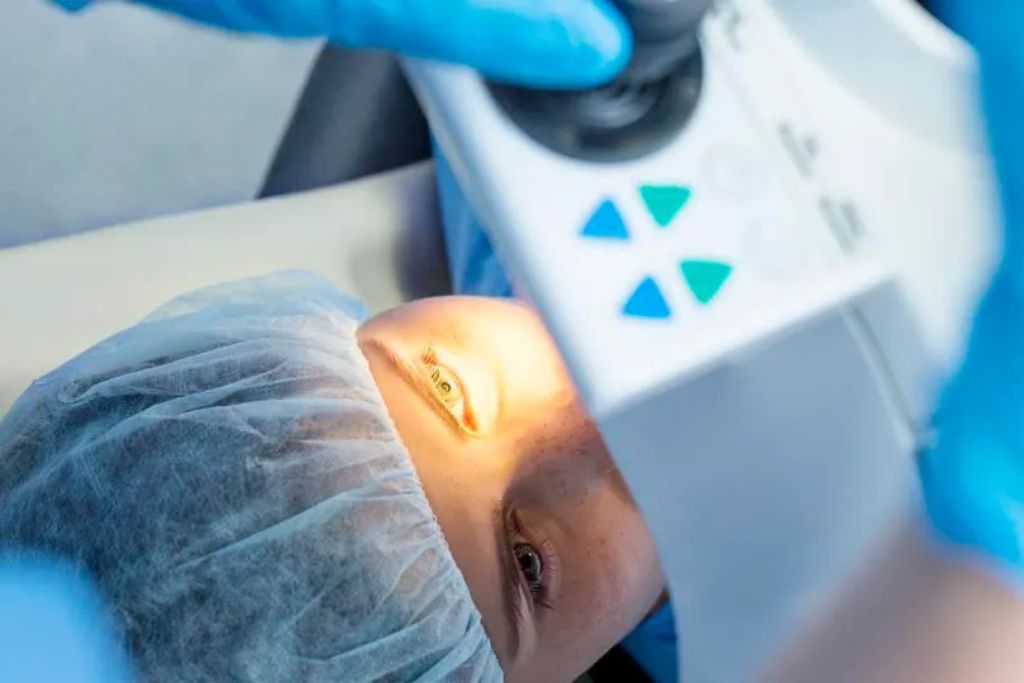
Computerized Comprehensive Eye Examination
A computerized comprehensive eye examination is a modern approach to eye health assessments, leveraging advanced technology to provide detailed insights into the condition of your eyes. It is more precise, efficient, and comfortable compared to traditional manual eye exams. In this article, we will explore the components, benefits, and the evolving role of computerized technology in eye care.

Stitchless Cataract Surgery
Cataracts are one of the leading causes of vision impairment across the globe. As we age, the lens of the eye becomes cloudy, making it difficult to see clearly. For many years, cataract surgery has been the go-to solution to restore vision, involving a process where the cloudy lens is replaced with an artificial one. Traditionally, this surgery required stitches, but thanks to medical advancements, we now have stitchless cataract surgery, a quicker, less invasive option.

Lasik Laser Surgery
LASIK (Laser-Assisted In Situ Keratomileusis) is a popular type of laser eye surgery used to correct vision problems like nearsightedness, farsightedness, and astigmatism. The procedure reshapes the cornea, the clear front part of the eye, so that light can properly focus on the retina, leading to improved vision.

Myopiya Control
Myopia, also known as nearsightedness, is a common vision condition where distant objects appear blurry while close objects can be seen clearly. Myopia usually develops during childhood and may progress over time. If left unchecked, high myopia can increase the risk of eye complications such as retinal detachment, glaucoma, or cataracts later in life.

Retina & Glaucoma
Glaucoma is a group of eye diseases that damage the optic nerve, which connects the retina to the brain. It is often associated with increased pressure inside the eye (intraocular pressure), but it can also occur with normal eye pressure. If untreated, glaucoma can lead to irreversible blindness.

Squint check-up
A squint, also known as strabismus, is a condition where the eyes do not align properly. One eye may turn inwards, outwards, upwards, or downwards while the other eye remains focused. Squints can be constant or intermittent and may affect one or both eyes. Early diagnosis and treatment are essential to prevent vision problems such as amblyopia (lazy eye).

Contact Lens
Contact lenses are thin, curved lenses placed directly on the surface of the eyes to correct vision. They can be used as an alternative to glasses for people with conditions such as nearsightedness (myopia), farsightedness (hyperopia), astigmatism, and presbyopia. In addition to corrective purposes, contact lenses can also be worn for cosmetic or therapeutic reasons.

Lasik Patient Quotes
Many LASIK patients describe their experiences with the procedure as life-changing. One patient expressed, “Life without glasses is amazing! LASIK gave me the freedom I’ve always wanted, and the results are better than I ever imagined. Waking up and being able to see clearly is such a game-changer.” Another shared, “I was nervous before the procedure, but it was quick and painless.

keratoconus Management
Many LASIK patients describe their experiences with the procedure as life-changing. One patient expressed, “Life without glasses is amazing! LASIK gave me the freedom I’ve always wanted, and the results are better than I ever imagined. Waking up and being able to see clearly is such a game-changer.” Another shared, “I was nervous before the procedure, but it was quick and painless.

